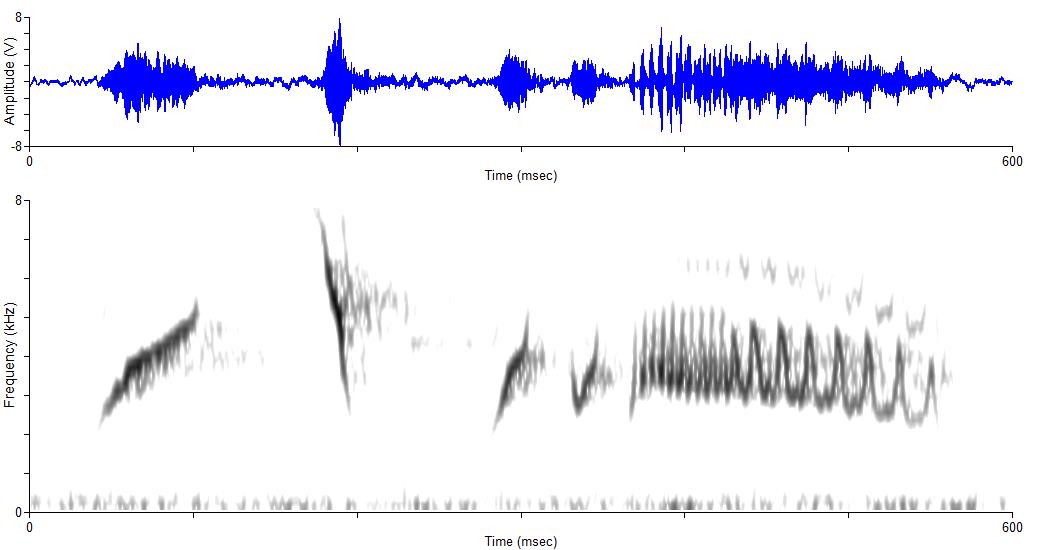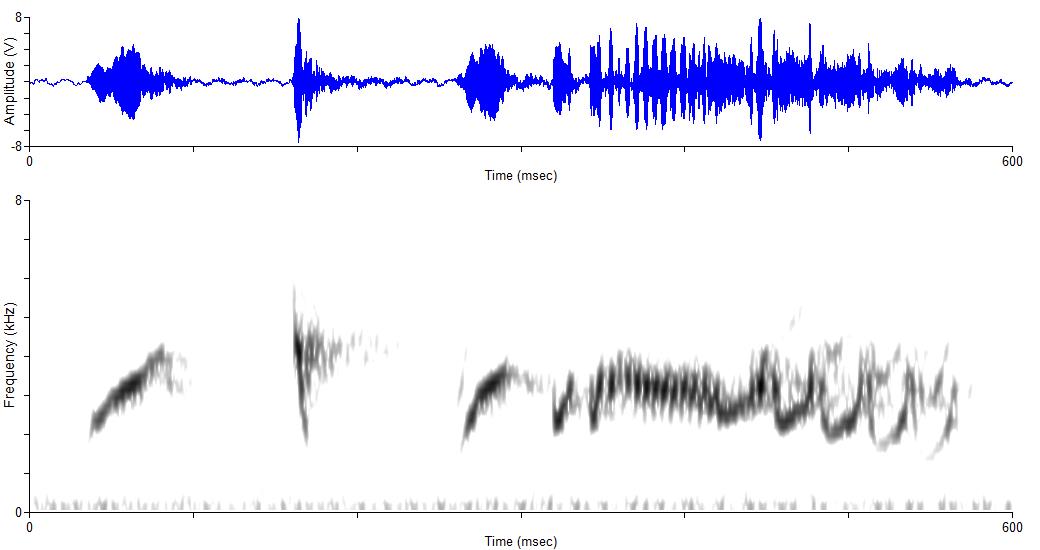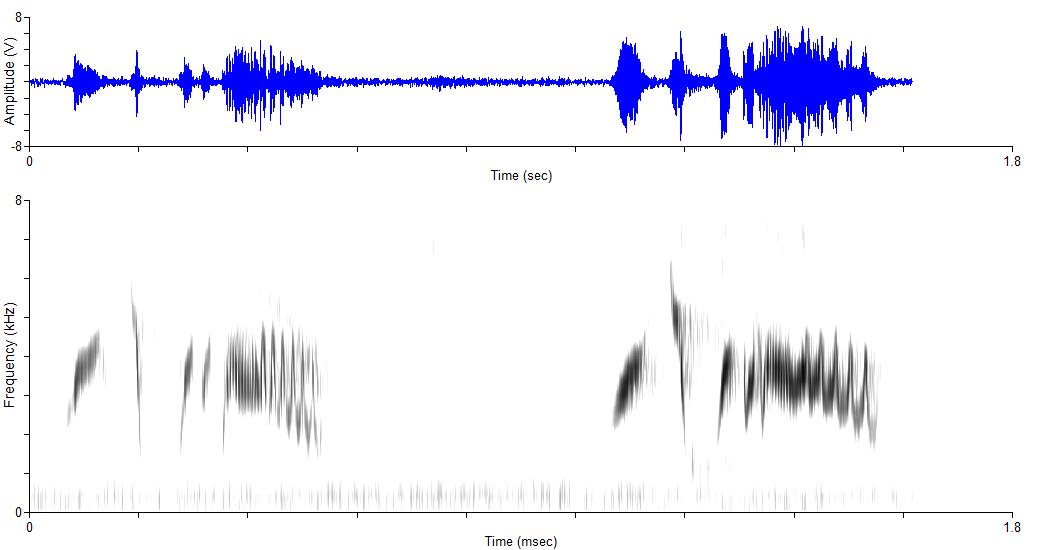Here we have a rousing dispute between two Willow Flycatchers, presumably males. In a bit I will explain how we know these are Willow Flycatchers, and then I will show you how we know, or at least suspect, they are Southwestern Willow Flycatchers, Empidonax traillii extimus. But first, a little background.
The 15 species of flycatchers in the genus Empidonax are very similar in appearance. Nonetheless, the naturalists and taxonomists who do these things had worked out the species limits in the genus by 1950--with one exception. They began to notice that an empid known then as Traill's Flycatcher sang differently in different parts of North America. Could these be vocal dialects of the same species, or might the two song-types belong to two distinct species that looked alike? Robert Carrington Stein found out with his Ph.D. dissertation at Cornell. The answer? Two species. It took the nomenclatural authorities a good while to get around to bestowing formal names on them, and during that interim they were known by their songs, "feebeeo" and "fitzbew." In time "fitzbew" became the Willow Flycatcher and "feebeeo" became the Alder Flycatcher. The English names reflect their habitat preferences, and the ecological affinities of those plants are paralleled by the more northerly range of the Alder Flycatcher, although the two species do co-occur in the northern U.S. and southern Canada without interbreeding. Genetic research has told us they have been separate species for two million years; they just look exactly alike. But sound alike they don't; if you know what to listen for.
Most empid species are very common, numbering in the millions. But there is one rare subspecies, this very Southwestern Willow Flycatcher. Like other Willow Flycatchers, it likes to nest in willows, but whereas those others eschew the hottest parts of the U.S., this form occurs only along watercourses that run through the deserts of the southwestern U.S. This habitat is rare, and the flycatcher that requires it is limping along with a few thousand individuals scattered among a dozen or so small populations. Its protected status under the Endangered Species Act is continuously challenged by development interests, and efforts to control the invasive tamarisk plant with a "natural enemy" has ironically been bad for the flycatcher, which has accepted tamarisk as a substitute for willow. Kern River Reserve is a stronghold of the Southwestern Willow Flycatcher, or was in 2012.
The most basic skill for identifying empids by ear is the ability to distinguish and count song-types in real time. This doesn't mean recognizing them; it is sufficient to be able to say how many types a bird is using. (Previous pages in this series have had a good bit to say about song-types.) The necessary information for western empids and eastern empids may be viewed by following those links. The ability to count song-types is all you need to distinguish Alder, with only one song-type, from Willow, with three. You may practice counting Alder song-types here and Willow here. After practicing a little, close your eyes and listen to today's cut, in which two birds are countering-singing. They are both using the standard three song-types of the Willow Flycatcher.
You might have noticed that the Willow Flycatcher is the only species on both those field guide pages. That's because it is the only empid that nests commonly in both eastern and westen North America. With such a huge range, it is not surprising that it has differentiated into slightly different forms that have been recognized as subspecies. The four northern subspecies sound very much alike, but extimusis identifiable by ear. More importantly, an extimus can be identified by measurements taken on sonograms of his recordings. James Sedgwick did the study. He recorded Willow Flycatchers from all over the west, inside the accepted range of extimus, and also from it's closest relative, geographically, adastus. Then he took measurements for several dozen parameters. The most useful feature for telling the two subspecies apart was the peaks at the end of the sonogram. Below is a standard fitzbew song by adastus, from Oregon. Notice that there are eight broad peaks at the end. Have a listen if you like. Now scroll down to the next sonogram.

Below is a standard extimus from southwestern New Mexico. It has only five terminal peaks, and they are much wider. Now scroll again to see today's birds.

Below is a close-up from today's featured sonogram. The horizontal scale is more compact than above, so you can compare the two birds readily. The bird on the right has five broad peaks, like the New Mexico bird above. The left bird has six peaks. What does that tell us? Sedgwick did not publish the values for the number of peaks, but he did publish ranges for the width of a peak. For adastus it was 15.6-16.3 milliseconds. For extimus it was 26.6-32.1 milliseconds. The peak-width of the right bird is 28.6 milliseconds, marking him as a good extimus. The bird on the left, though, is problematic, with a peak-width of 18.0 milliseconds. That is outside the range of adastus, but close to it, and far from the values Sedgwick found from the lowlands of Arizona, Utah, and New Mexico for extimus. Sedgwick did not include the southern California populations in his study, but they are always treated as being members of extimus. One measurement from one song from one bird does not change that assessment, but it does give me pause, even though I am 100% in favor of protection for the Willow Flycatchers breeding in desert riparian vegetation. One thing we can say with confidence is that these two birds saw each other as rivals, regardless of their pedigrees.
